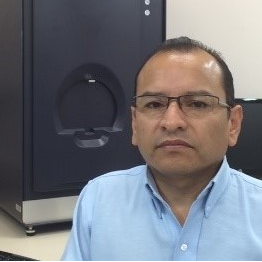Advanced Ceramics Applied in Healthcare
A special issue of Materials (ISSN 1996-1944). This special issue belongs to the section "Advanced and Functional Ceramics and Glasses".
Deadline for manuscript submissions: closed (20 April 2023) | Viewed by 8671
Special Issue Editors
Interests: bioactive glasses; therapeutic ions; bone tissue repairment; bone cancer treatment; hyperthermia; brachytherapy
Interests: nanomaterials; magnetic nanoparticles; nanomedicine; therapy; diagnosis; theranostic; cancer; neurodegenerative diseases; magnetic hyperthermia; lab-on-a-chip; molecular imaging; regenerative medicine
Special Issues, Collections and Topics in MDPI journals
Special Issue Information
Dear Colleagues,
This Special Issue will provide readers with up-to-date information on the recent progress in the use of advanced ceramics materials for healthcare applications, from different perspectives including material science relations, material development and new healthcare designs. We particularly encourage contributions on combinations of ceramic designs and their applications for bringing new options to healthcare.
Contributing papers are welcome to be publish including the following areas, considering both ceramic and composite-based ceramics materials:
- Materials for biomedical applications;
- Biohybrids or biomimetics materials for biomedical applications;
- Scaffolds for tissue engineering and regenerative medicine;
- Materials designed by nanomedicine and nanotechnology aiming biomedical applications;
- Materials used in biofabrication process;
- Materials biointerfaces, including coatings or surfaces with specific properties;
- Materials with applications in drug delivery, imaging, theranostics, gene therapy, and immunotherapy;
- Materials for therapy of diseases, vaccines and precision medicine;
- Devices for healthcare applications.
Prof. Dr. Juliana Marchi
Prof. Dr. Lionel Fernel Gamarra
Guest Editors
Manuscript Submission Information
Manuscripts should be submitted online at www.mdpi.com by registering and logging in to this website. Once you are registered, click here to go to the submission form. Manuscripts can be submitted until the deadline. All submissions that pass pre-check are peer-reviewed. Accepted papers will be published continuously in the journal (as soon as accepted) and will be listed together on the special issue website. Research articles, review articles as well as short communications are invited. For planned papers, a title and short abstract (about 100 words) can be sent to the Editorial Office for announcement on this website.
Submitted manuscripts should not have been published previously, nor be under consideration for publication elsewhere (except conference proceedings papers). All manuscripts are thoroughly refereed through a single-blind peer-review process. A guide for authors and other relevant information for submission of manuscripts is available on the Instructions for Authors page. Materials is an international peer-reviewed open access semimonthly journal published by MDPI.
Please visit the Instructions for Authors page before submitting a manuscript. The Article Processing Charge (APC) for publication in this open access journal is 2600 CHF (Swiss Francs). Submitted papers should be well formatted and use good English. Authors may use MDPI's English editing service prior to publication or during author revisions.
Keywords
- ceramic biomerials
- scaffolds
- tissue engineering
- nanomedicine
- biomedical applications
- biofabrication
- ceramic biointerfaces
- therapy, diagnostics and theranostics
- ceramic devices
- healthcare applications







